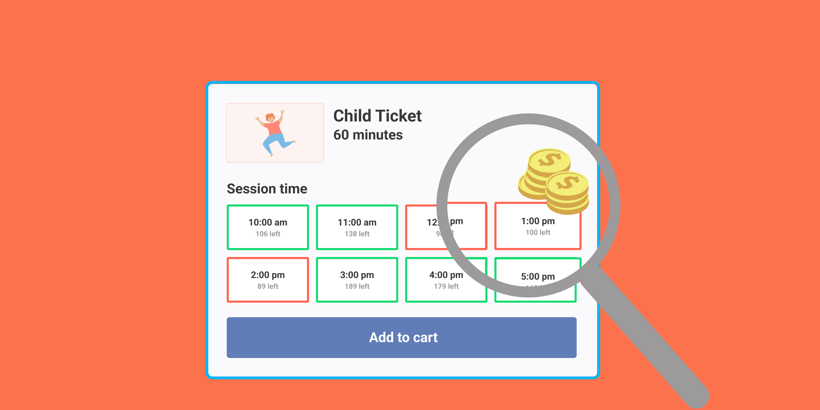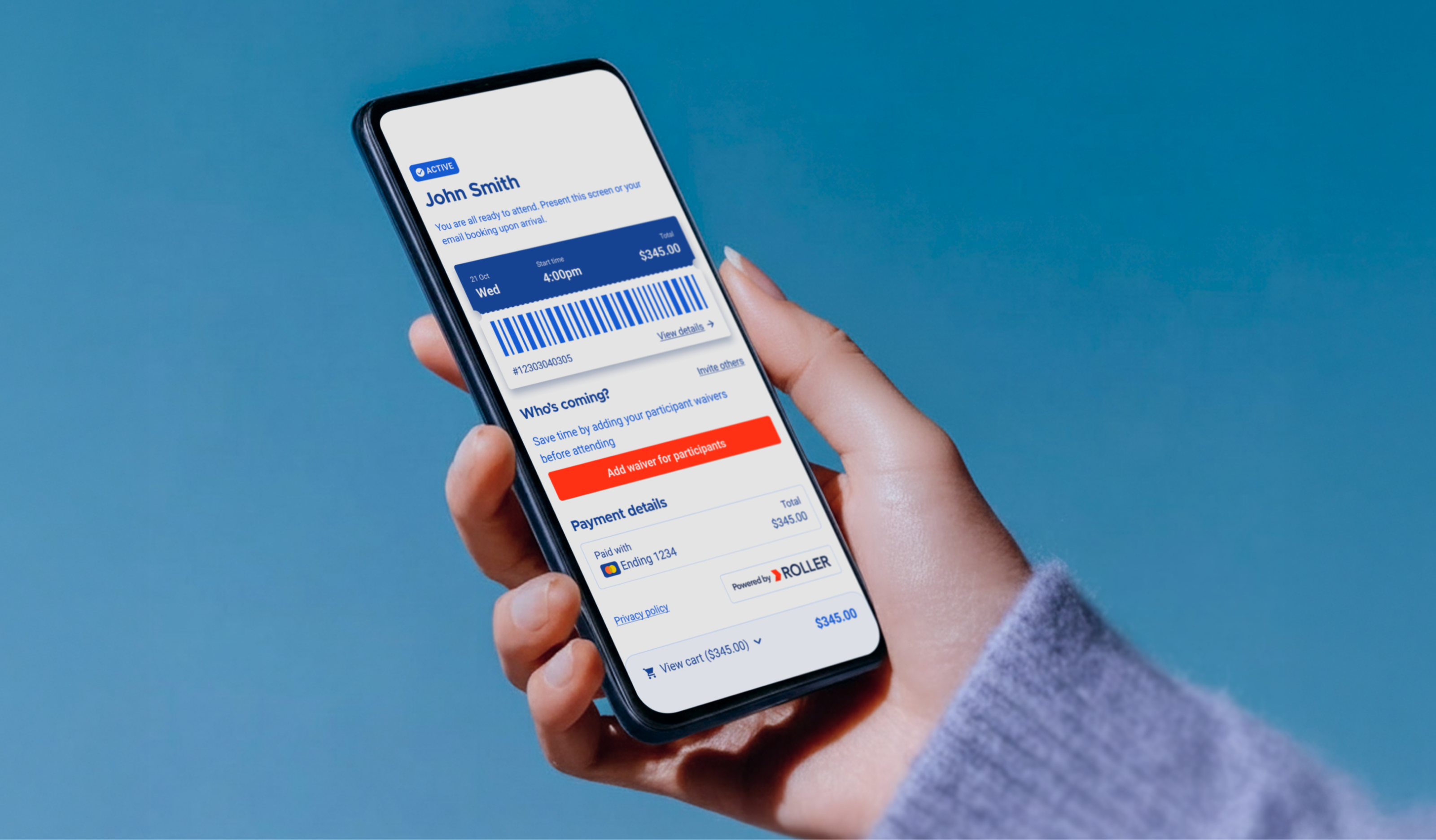Dynamic Ticket Pricing: How To Implement It

Dynamic ticket pricing is a term that sounds both impressive and powerful. And it is.
Even if you haven’t heard about it until right now, chances are you’ve probably reaped a benefit or two from it when attending your favorite entertainment venue.
Dynamic ticket pricing is a great tool to help venue operators maximize their capacity by ensuring they are not discounting prices when demand is high and there is a large enough number of people willing to pay full price.
On the flip side, when demand is low, it allows operators to encourage guests to visit (such as discounted pricing) since the overheads to remain open are the same whether one guest visits per hour or 10.
What is dynamic ticket pricing?
Dynamic ticket pricing is a method sensitive to the constant ebb and flow of customer demand for a certain product (such as rides, shows, attractions, and events).
The ticket cost is subsequently adjusted up or down accordingly to drive business profitability.
At its very heart, dynamic ticket pricing attempts to solve the economic riddle, “At a time of low demand would you prefer your venue had one guest in attendance paying the normal high fixed price, or multiple guests on-site each paying a lower price?”.
In other words, the entry cost of the attraction can change according to potential customer numbers and other market forces. This can lead to higher attendance numbers, an increase in secondary-spend by guests once on-site, a greater guest experience, and an increase in endorsements, to name a few.
With the help of sophisticated algorithms and machine learning, dynamic ticket pricing can be a business tool for generating increased revenue, maximizing attendance, and driving increased demand due to positive perception.
How does dynamic ticket pricing work?
Many factors influence variable ticket prices like season and daily attendance figures. This information creates patterns that are studied to determine the best pricing strategy.
One of the main benefits of using dynamic ticket pricing in the leisure and attractions industry is that it’s nimble enough to be applied to a certain day of the week and times in the day, all in the interests of delivering successful business outcomes and driving a better guest experience.
Types of dynamic ticket pricing
There are many different types of dynamic ticket pricing. You may find that your venue is suited to just one or maybe a combination of a few. Let’s check out the main ones.
Market-based pricing
Market-based pricing could perhaps be seen as the strategy most closely aligned with the original concept of dynamic ticket pricing.
The age-old market principle of supply and demand applies here to a varying degree. For example, an attraction venue operating a giant water slide may raise the ticket price during a heat wave and lower the price when storm clouds are gathering.
Segmented pricing
Occasionally referred to as price discrimination, segmented pricing is based on knowing your customer base. According to known data and some accepted assumptions, the same product or attraction is offered to different segments at different prices.
For example, high socio-economic guests are sometimes tempted with higher ticket prices (and perhaps offered associated higher service levels) while students are encouraged with a lower-priced ‘student-rush.’
Time-sensitive pricing
Time-based pricing, as the name suggests, is when the ticket cost varies according to time. Leisure and activities businesses use this method to incentivize guests to attend their venue during a typical ‘off-peak’ period.
Peak pricing
With peak pricing, the ticket price directly reflects the variable high demand and desirability of a product throughout the year.
This pricing strategy can also be amplified by certain factors such as seasonality and the uniqueness of the attraction on offer. As a result, peak pricing can vary substantially between venues and attractions.
Penetration pricing
Penetration pricing is often used as a business acquisition strategy. In order to attract a large customer base at the start-up of a new business or lure guests from a competitor, ticket pricing is kept deliberately low compared to the going market rate. Once a guest threshold is reached or the product becomes well known, pricing tends to slowly increase and normalize.
Dynamic pricing best practices
Dynamic pricing works best for venues with a clear understanding of their bigger business objectives, an intimate knowledge of their customer, and the ability to communicate value well.
By focusing on the below strategies, you can maximize the return you're likely to see from dynamic pricing.
Clarify your business goals
A clear and concise pricing strategy can help your business achieve its goals. Whether your principal objective is to reduce churn, increase guest Lifetime Value (LTV), drive repeat visit rates, or increase membership or acquisition, then dynamic ticket pricing could be a great fit for your business.
Know your customer
To provide the very best guest experience, it’s highly beneficial to have a really deep understanding of your core target audience.
Who are you trying to attract to your venue? What are the attractions that will appeal to your typical customer? Do you have insight into your typical guest's general age, personality, and socioeconomic background?
All insights are valuable in determining the potential dynamic ticket price and its projected success in attracting guests through the gates.
Stay true to published prices
The last thing you want is a disgruntled guest blindsided by a higher ticket price when turning up at your venue’s entry.
Best practice: It should be honored if there is a published ticket price. For those attractions, days, or seasons that are prone to shifts in customer demand, you may want to consider continual website updates for any dynamic ticketing pricing changes.
Communicate clearly
Dynamic ticket pricing is an algorithmic calculation that selects the appropriate ticket price adhering to many attributes to, amongst many other things, increase your venue’s profitability. But it should never be used for ‘price gouging.
Best practice: your guests should be aware of and remember that during ticket selling, there is no fixed or guaranteed lowest price during identified periods.
Dynamic ticket pricing is, at its very core, a way for venue operators to stimulate sales, increase profit and drive interest. The resulting guest and business insights, such as emerging trends and potential new guest flows, can be leveraged to enhance perceived value-for-money and satisfaction.
Related articles

.png)
What the 2025 Pulse Report Reveals About Guest Booking Behavior at Attractions
.png)
How to Sell Tickets Online: A Complete Guide for Attraction Venues
Enhance your guest experience
Get free education, tips and inspiration to help you run a successful venue.